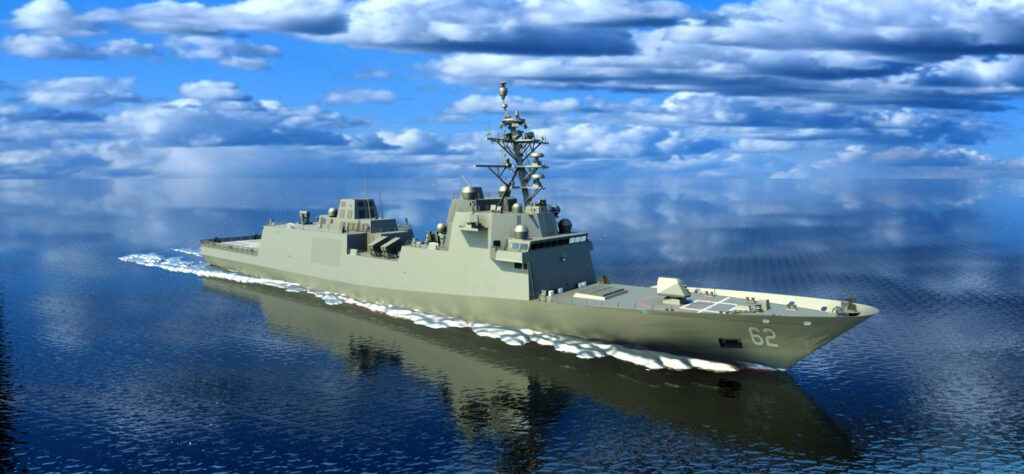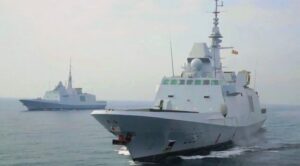
Constellation-class frigate
WASHINGTON: A week before rolling out its 2022 budget plan, the Navy doubled down on its new Constellation-class frigates with a $553.9 million commitment to build the second ship in the class, the USS Congress. The full price of the frigate — counting not just payments to the shipyard but all the government-furnished high-tech weapons systems — is estimated at $1.1 billion, with delivery to the Navy in 2026, while the third and subsequent ships in the class are supposed to drop to around $940 million.
The ships are named after two of the Navy’s original six sail-powered frigates ordered in 1794.
The award for Congress is not unexpected. The Navy’s contract with shipbuilder Fincantieri Marinette Marine has options for 10 ships, and the service aims to buy at least 20. But it’s still a very public commitment to the class at a time when all eyes in Washington are turning to the budget. The fiscal year 2022 plan is expected to be relatively good news for Navy shipbuilding, with Biden Administration budget cuts falling more heavily on the other services, driven by the administration’s focus on competing with China in the West Pacific.
The Navy has struggled, however, to deliver new ship classes. That includes the supercarrier USS Ford, which headed into trials with some of its weapons elevators unfinished, and the two classes of small, high-speed Littoral Combat Ship, whose minesweeping and anti-submarine modules lagged for years.
The problem with those programs was, at least in part, how many new technologies they tried to pioneer at once, from electromagnetic aircraft-launch catapults on Ford to a host of drones on LCS. So for the Constellation class, the Navy is aiming to combine proven components:
- The hull is derived from Fincantieri’s FREMM frigates already in service with the French and Italian navies.

France’s first two FREMM frigates built by Italy’s Fincantieri.
- The computerized combat system, Aegis Baseline 10, is the same upgrade to the time-honored Aegis system that will go on Navy destroyers, enabling the frigates to defend both themselves and nearby vessels from air and missile attack.
- The multipurpose missile launchers are the same Mk 41 Vertical Launch System (VLS) long standard on cruisers and destroyers. That means the frigates can use the many different weapons – both offensive and missile-defense – already developed and in development for VLS.
- The main sensor system, the Enterprise Air Surveillance Radar (EASR), is also going on carriers and amphibious warships, and it’s derived from the SPY-6 going on the newest Arleigh Burke destroyers.
The goal is a warship that shares many of the capabilities of the Navy’s workhorse destroyers, the Arleigh Burke class, but at a smaller and cheaper scale. (A destroyer costs over $2 billion). At the same time, the frigate is larger, more powerful, and harder to sink than LCS, which was originally envisioned for auxiliary roles like minesweeping and sub-hunting, not fleet-to-fleet combat. To that end, Navy Sea Systems Command spokesman Alan Baribeau told me, the frigate “will provide increased range, endurance and survivability… and added capability in the Electronic Warfare/Information Operations (EW/IO) area that LCS does not currently possess.”
Although the Navy won’t confirm this, the frigate is also expected to be slower than LCS, whose 40-plus knot speed drove major design compromises and propulsion problems without ever meeting a clear tactical need.
Sullivan: Defense industry ‘still underestimating’ global need for munitions
National Security Advisor Jake Sullivan said that there are “no plans” for another Ukraine supplemental at this point.


























